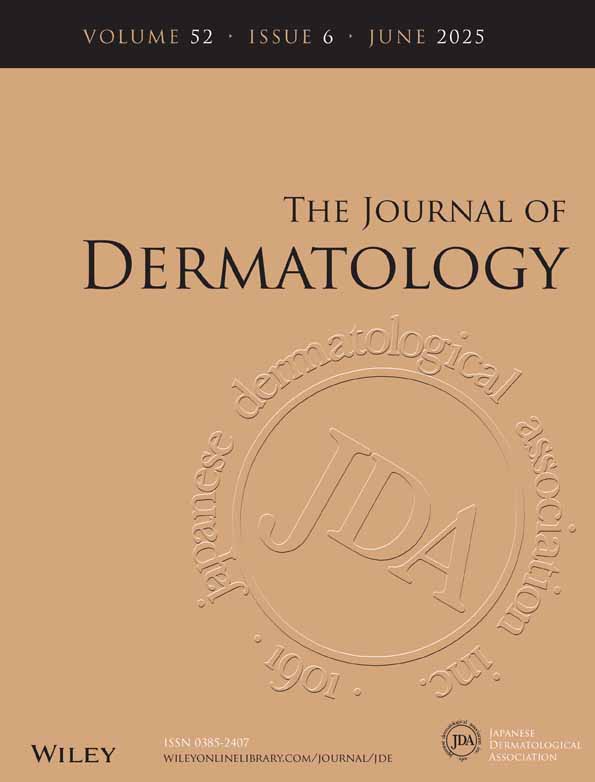The importance of pseudohyperchloremia for the diagnosis of bromoderma
Abstract
Bromoderma is caused by exposure to bromine-containing agents, presenting as exudative plaques, enlarging nodules, necrotic ulcers, and acne-like skin rash. Pseudohyperchloremia, a key finding in some bromoderma patients, is a phenomenon in which the ionic membrane is affected by halogens such as bromine ions (Br−) and iodine ions when serum chloride ion (Cl−) is measured by the ion-selective membrane electrode (ISE) method. This results in a high value of serum Cl− even though the actual level is normal. Here, we report a case of bromoderma that did not show pseudohyperchloremia in a previous hospital. A 43-year-old man came to our hospital with verrucous nodules and erythema on both shins. He had had epilepsy since the age of 3 months and had been treated with potassium bromide. A skin biopsy showed pseudocarcinomatous hyperplasia and dermal infiltration of lymphocytes and neutrophils. His serum Cl− level measured in our hospital exceeded the upper threshold. Due to his medication history, clinical and histological appearances, and pseudohyperchloremia, the case was diagnosed with bromoderma. Potassium bromide was discontinued the day after the patient's visit to our hospital. All verrucous nodules disappeared 25 weeks after the first visit. It has been reported that there is no clear correlation between serum levels of Cl− and Br− and that the degree of pseudohyperchloremia is dependent on the ion exchange membrane used. Therefore, we have to be aware that bromoderma cannot be ruled out even if pseudohyperchloremia is not seen. Clearance of skin rashes after discontinuation of bromine is essential if elevation of serum Br− levels is not confirmed. In retrospect, in our case, the serum Cl− level was measured by electrochemiluminescence immunoassay in the previous hospital, but was measured by the ISE method in our hospital. It is important to check serum Cl− levels and the method of measurement when seeing patients with suspected bromoderma.
CONFLICT OF INTEREST STATEMENT
None declared.




